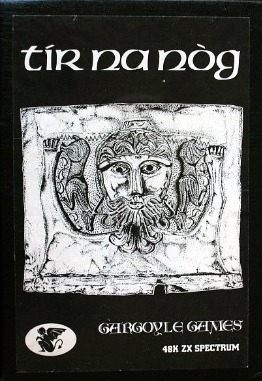
Tir Na Nog is a video game that was published in 1984 by Gargoyle Games for the ZX Spectrum and Amstrad CPC. A Commodore 64 version was released in 1985. It is loosely based on Celtic mythology. Tir Na Nog was positively reviewed by critics. A prequel - Dun Darach - was published a year later.
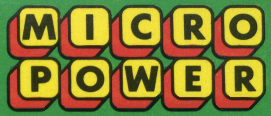
Micro Power was a British company established in the early 1980s by former accountant Bob Simpson. The company was best known as a video game publisher, originally under the name Program Power. It also sold many types of computer hardware and software through its Leeds 'showroom' or via mail order.

Eureka! is a video game for the Commodore 64 and ZX Spectrum computers, written by Ian Livingstone, developed by Novotrade for Andromeda Software and published by Domark in 1984.

Adventure A: Planet of Death is a text adventure from Artic Computing published for the ZX80 and ZX81 in 1981. Releases followed for the ZX Spectrum (1982), Commodore 64 (1984), and Amstrad CPC (1985). The game was followed by Adventures B, C, D, E, F, G, and H.

The Heroes of Karn is a 1983 adventure game written by Ian Gray. It was released by Interceptor Micros for the Commodore 64, Amstrad CPC and ZX Spectrum. Music was written by Chris Cox. The Spectrum and Amstrad versions were adapted by David M. Banner with graphics by Terry Greer. A sequel, Empire of Karn, was released in 1985 on the Commodore 64.

Countdown to Doom is a text adventure game written by Peter Killworth for the BBC Micro and published by Acornsoft in 1982. It is set on the planet Doomawangara, which is coyly shortened to "Doom". An Acorn Electron version was released in 1984 but only as a ROM cartridge for the Plus 1 expansion. This was the only game released exclusively as a ROM cart for the Electron. There are two sequels, both published by Topologika: Return to Doom and Last Days of Doom.
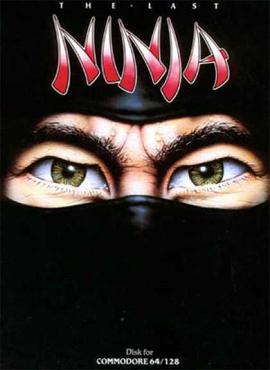
The Last Ninja is an action-adventure game originally developed and published by System 3 in 1987 for the Commodore 64. It was converted to the Apple IIGS, MS-DOS, BBC Micro and Acorn Electron in 1988, the Apple II series in 1989, the Amiga and Atari ST in 1990, and the Acorn Archimedes in 1991.

Basil the Great Mouse Detective is a platform, action-adventure game designed by Bob Armour and published by Gremlin Graphics in 1987 for the Amstrad CPC, Atari 8-bit computers, and Commodore 64. The game is based on the 1986 Disney animated film The Great Mouse Detective.

The Saga of Erik the Viking is a text-based adventure video game developed by Level 9 Computing and published by Mosaic Publishing in 1984. The game runs on the Amstrad CPC, BBC model B, Commodore 64, and ZX Spectrum.
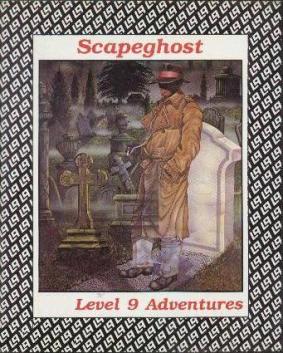
Scapeghost is a text adventure published by Level 9 Computing in 1989. It was the last text adventure game released by the company.

The Boggit: Bored Too is a text adventure game by Delta 4 released in 1986 for the Commodore 64, Amstrad CPC, and ZX Spectrum home computers. The game is a parody of the J. R. R. Tolkien novel The Hobbit and of the earlier game based upon it also called The Hobbit. It is the prequel to Bored of the Rings.

Human Killing Machine is a 2D fighting video game. The game was developed by British company Tiertex, who hired external team Blue Turtle to produce the graphics, and published by U.S. Gold, released in March 1989. It was touted as a sequel to Tiertex's home computer conversion of Street Fighter. It was released for 8-bit and 16-bit home computer formats.
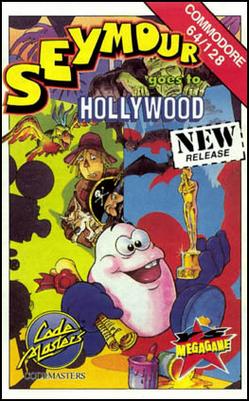
Seymour Goes to Hollywood, also known as Seymour at the Movies, is a platform and adventure game developed by Big Red Software and originally published in Europe by Codemasters in 1991. Players control Seymour, a small potato-like creature who wishes to be a film star. The film's script has been locked in a safe, meaning Seymour must solve puzzles by collecting and using objects scattered throughout the game in order to progress, ultimately retrieving the script and allowing filming to start.
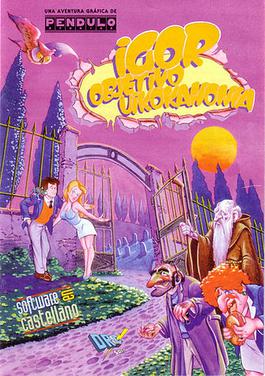
Igor: Objective Uikokahonia is a 1994 graphic adventure game developed by the Spanish company Pendulo Studios and published by DROsoft. The game tells the story of Igor Parker, a university student in love with a classmate named Laura Wright. Hoping to win her affection, Igor surmounts a series of obstacles in an effort to join her on a field trip to the island paradise of Uikokahonia. The player assumes the role of Igor and navigates the campus while collecting items, solving puzzles and conversing with non-player characters.

Soft & Cuddly is a horror action-adventure game released for the ZX Spectrum home computer. It was developed by John George Jones and published by The Power House in September 1987 in the United Kingdom and in early 1988 in Spain. The player assumes the role of a man armed with a laser gun and a jet pack, whose mother, the Android Queen, has been dismembered. The player's task is to locate the scattered body parts of the Android Queen and sew her back together.

Hundra is an action game developed by Spanish studio Zeus Software and published by Dinamic Software for the Amstrad CPC, MSX and ZX Spectrum in 1988. It was loosely inspired by the 1983 film Hundra but is not based on it.
Fantasia Diamond is a text adventure game by Kim Topley and published by Hewson Consultants. It was released in 1984 for the Amstrad CPC, Acorn Electron, ZX Spectrum and BBC Micro home computers. Unusually for Hewson, it was not released on the Commodore 64 with the game's author stating when asked "The answer to your question is simply that I didn’t own a C64 at the time".

Carlos Sainz: World Rally Championship is a 1990 racing video game co-developed by the Spanish companies Zigurat Software and Arcadia Software, and published by Zigurat for Amstrad CPC, MS-DOS, MSX and ZX Spectrum. Featuring Spanish rally driver Carlos Sainz and themed around rallying, the game pit players with races across various locations to qualify for the next course in the World Rally Championship and modify characteristics of the Toyota Celica to accommodate each courses.

Sito Pons 500cc Grand Prix is a 1990 racing video game developed and published by the Spanish company Zigurat Software for Amstrad CPC, MS-DOS, MSX and ZX Spectrum. Featuring former Spanish racer Sito Pons and themed around motorcycle racing, the game pit players driving the Honda NSR500 with races against AI-controlled opponents across various countries to qualify in the 500cc class of the Grand Prix motorcycle racing.

Capitán Sevilla is a 1988 platform video game developed by the Spanish group Hi-Score and published by Dinamic Software for the Amstrad CPC, MSX and ZX Spectrum. In the game, players assume the role of Mariano López, a transporter-turned superhero after eating a radiation-affected blood sausage to fight against the mad scientist Torrebruno and protect Earth.



















